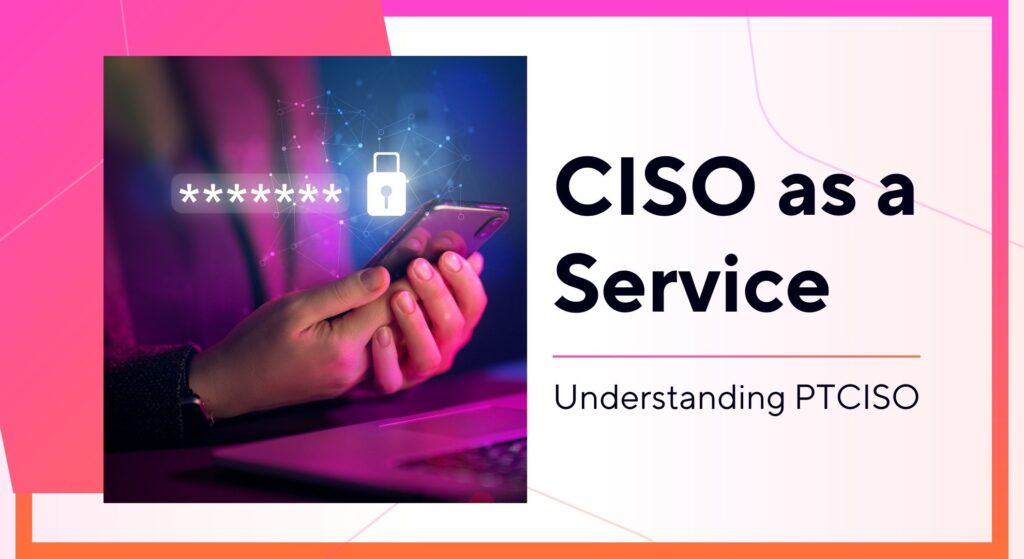In today’s digital world, cybersecurity is more important than ever. Many businesses face threats from hackers and data breaches. They need someone who can keep their information safe. This is where CISO as a service PTCISO comes in, particularly through platforms like PTCISO. But what does this mean? In this article, we will answer several key questions about CISO as a Service, including what it is, its benefits, how it works, and who should consider it.
What is CISO as a Service?
CISO as a Service, or CaaS, is a model where companies can hire a Chief Information Security Officer (CISO) without having to employ one full-time. A CISO is responsible for protecting an organization’s data and technology from threats. With CaaS, businesses can access expert security advice and services when they need it.
This service is especially useful for smaller companies that may not have the resources to hire a full-time CISO. CaaS provides these businesses with the expertise they need to create a strong security posture. The CISO will help design and implement security strategies, manage risks, and respond to incidents. With this model, organizations can protect their data and systems without the high costs of a full-time employee.
Why Do Businesses Need CISO as a Service?
Businesses face numerous cybersecurity threats daily. From phishing attacks to ransomware, these threats can lead to severe consequences, such as data loss and financial harm. Many companies do not have the skills or knowledge to handle these threats effectively.
CISO as a Service helps businesses by providing expert guidance. It allows organizations to have a dedicated security leader who understands the latest threats and security measures. This expertise is crucial for developing strong security policies and procedures. Without proper security measures, businesses risk losing valuable data and facing hefty fines due to compliance issues.
Additionally, the world of cybersecurity is constantly changing. New threats emerge regularly, making it difficult for companies to keep up. A CISO can help organizations stay ahead of these threats, ensuring they are prepared for any situation.
How Does CISO as a Service PTCISO Work?
CISO as a Service typically operates through a subscription model. Organizations pay a monthly fee to access the services of a virtual CISO. This model is flexible and allows companies to choose the level of support they need.
When a company signs up for CaaS, the CISO will conduct an initial assessment of the organization’s security posture. This assessment helps identify vulnerabilities and areas for improvement. Based on the findings, the CISO will create a tailored security strategy that fits the organization’s needs.
The CISO will also help implement security measures, train staff, and monitor systems for threats. Regular updates and reports are provided to keep the organization informed about its security status. This ongoing support is vital for maintaining strong security practices and adapting to new threats.
Who Should Consider CISO as a Service?
CISO as a Service is ideal for several types of organizations. Smaller businesses often lack the resources to hire a full-time CISO but still need strong security measures. CaaS allows these companies to access expert help without breaking the bank.
Additionally, larger organizations may also benefit from CaaS. These companies might need additional support for specific projects or during high-demand periods. By utilizing a virtual CISO, they can supplement their existing security team.
Startups and companies undergoing rapid growth are also prime candidates for CaaS. As they expand, their security needs become more complex. A virtual CISO can help these organizations build a robust security framework from the ground up.
What Are the Benefits of CISO as a Service?
CISO as a Service offers several advantages for organizations of all sizes. Here are some key benefits:
| Benefits of CISO as a Service |
|---|
| Cost-Effective: Hiring a full-time CISO can be expensive. CaaS offers a more affordable solution. |
| Expertise: Access to experienced security professionals who understand current threats and best practices. |
| Scalability: Organizations can scale services up or down based on their needs. |
| Compliance: Helps ensure organizations meet industry regulations and standards. |
| Focus on Core Business: Allows businesses to focus on their main activities while security experts handle safety. |
By leveraging these benefits, organizations can improve their overall security posture and protect valuable data.
What Challenges Does CISO as a Service Address?
CISO as a Service addresses various challenges that organizations face in cybersecurity. Many companies struggle with limited budgets for security. Hiring a full-time CISO may not be feasible for every organization. CaaS provides a way to access expert help without the full salary commitment.
Another challenge is the shortage of cybersecurity talent. Many businesses find it hard to hire skilled professionals to manage their security needs. CaaS offers access to experienced CISOs who are ready to assist without the lengthy recruitment process.
Finally, the ever-evolving landscape of cybersecurity poses a significant challenge. Organizations often lack the knowledge to adapt to new threats. CISO as a Service keeps companies informed about the latest risks and offers proactive solutions to mitigate them.
How to Choose the Right CISO as a Service Provider?
Choosing the right CISO as a Service provider is crucial for success. Here are some factors to consider:
- Experience: Look for a provider with a strong background in cybersecurity and experience in your industry.
- Services Offered: Ensure the provider offers services that meet your organization’s specific needs, such as risk assessment, incident response, and compliance support.
- Reputation: Research the provider’s reputation by checking reviews and testimonials from previous clients.
- Communication: Choose a provider that communicates clearly and regularly. Effective communication is essential for building a strong working relationship.
- Cost: Consider the pricing structure and ensure it fits within your budget. Compare different providers to find the best value for your organization.
By carefully evaluating these factors, organizations can select the right CaaS provider to enhance their security measures.
What is the Future of CISO as a Service PTCISO?
The future of CISO as a Service looks promising. As cybersecurity threats continue to evolve, businesses will increasingly rely on expert guidance to protect their data. CaaS offers a flexible solution that meets the growing demand for cybersecurity expertise.
Furthermore, the rise of remote work and digital transformation has increased the need for strong security measures. Organizations must adapt their security strategies to address new challenges. CISO as a Service will play a vital role in helping businesses navigate these changes.
As more organizations recognize the importance of cybersecurity, the CaaS model is expected to gain popularity. Companies of all sizes will turn to this service to enhance their security posture and safeguard their valuable information.
CISO as a Service, particularly through platforms like PTCISO, is a valuable resource for organizations looking to enhance their cybersecurity. It provides expert guidance without the costs associated with a full-time employee. By leveraging CaaS, businesses can improve their security measures, address challenges, and adapt to the ever-changing landscape of cyber threats. As cybersecurity continues to be a critical concern, CISO as a Service will remain an important part of the solution for many organizations.
By implementing CISO as a Service, companies can focus on their core operations while ensuring that their data and systems are well-protected from potential threats.



